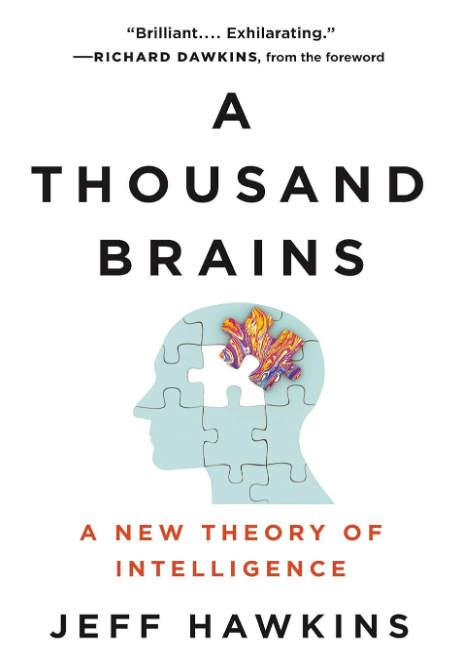A Thousand Brains: A Thought-Provoking Journey into the Neocortex and Beyond
In “A Thousand Brains,” Jeff Hawkins, the co-founder of Palm Computing and Numenta, embarks on an ambitious quest: to unveil a new theory of intelligence rooted in the structure and function of the neocortex. The book weaves together his personal journey, insights from neuroscience, and a bold vision for the future of artificial intelligence.
Hawkins begins by introducing his fundamental premise: brains don’t compute, they predict. He argues that the neocortex, with its billions of columns of interconnected neurons, acts as a massive prediction machine, constantly building and updating internal models of the world based on sensory input. This framework, known as the Hierarchical Temporal Memory (HTM), forms the core of his theory.
Hawkins masterfully guides readers through the intricacies of HTM, explaining how these columns form sequences of predictions, learn through the error correction algorithm, and dynamically update their models. He draws compelling analogies, like comparing the neocortex to a continuously optimizing weather prediction system, making the complex concepts engaging and accessible.
But “A Thousand Brains” is not merely a neuroscience primer. Hawkins also tackles the hotly debated topic of artificial general intelligence (AGI). He sharply critiques current AI approaches, arguing that they lack the fundamental principles of prediction and learning present in the brain. He emphasizes that brute-force deep learning, despite its recent successes, is akin to building a skyscraper on a wobbly foundation.
His alternative vision? Building AGI based on the principles of HTM. He describes his own company, Numenta, and its efforts to develop intelligent machines inspired by the neocortex. While acknowledging the challenges and unknowns, Hawkins paints a hopeful picture of a future where AGI emerges not as a threat, but as a powerful tool for human progress.
The book extends beyond the realm of technology, delving into the philosophical and existential implications of understanding intelligence. Hawkins grapples with questions about consciousness, the nature of self, and the possibility of uploading our minds to machines. These discussions, while speculative, add depth and richness to the overall intellectual adventure.
However, “A Thousand Brains” is not without its shortcomings. Some readers might find the technical explanations of HTM challenging, and the later chapters, venturing into broader philosophical and existential territory, could feel less grounded. Additionally, while Hawkins convincingly dismantles current AI approaches, his vision for HTM-based AGI remains largely theoretical, requiring further validation and development.
Despite these limitations, “A Thousand Brains” stands as a significant contribution to the ongoing discourse on intelligence, both natural and artificial. Hawkins’ bold theory, presented with clarity and enthusiasm, offers a refreshing perspective on how the brain works and how we might approach the creation of truly intelligent machines. The book is a thought-provoking read for anyone interested in neuroscience, artificial intelligence, the future of technology, and the fundamental questions about our own existence.
If you are:
- Interested in understanding the neocortex and its role in intelligence
- Curious about the future of artificial intelligence and its potential implications
- Fascinated by big ideas and thought-provoking theories about consciousness and self
- Seeking a clear and engaging explanation of complex scientific concepts
Then “A Thousand Brains” is a book you should definitely add to your reading list.
